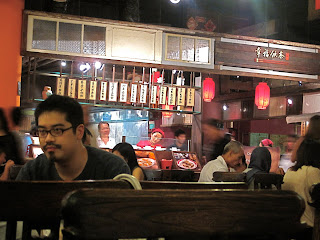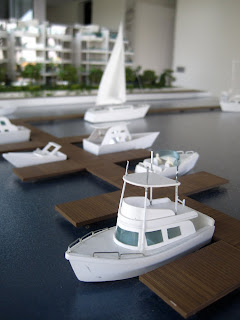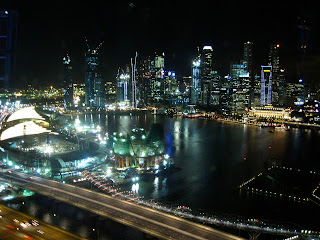Game One: Netherlands vs. Denmark, 2-0, Leading up to this game I was concerned that I would not be able to watch it—as it was scheduled for a 1:30pm start. However, come game day, my colleague (a native Dutchman who was FAR more excited than I was) came to collect me at 1:30 to go watch at a nearby terrace. Our boss gave us permission for a long lunch hour, so off we went to join the scores of soccer fans lined up at Rembrandtplein. It was one of the first sunny days in a while, so everyone was outside gathered around the big screen TVs in front of each bar. Unfortunately, the umbrella on top of the TV wasn’t quite enough to stop the glare, so the first half was a bit bright. Things were tense until the second half when Denmark scored an own-goal and everyone burst with excitement. Holland won, 2-0, and our return to the office was met with cheers and hugs from our boss and colleagues who had heard all of the cheering with each goal.
Game Two: Netherlands vs. Japan, 1-0, Instead of watching game two, my colleagues and I spent our Saturday in The Hague attending teachings from a Tibetan Buddhist lama. Throughout the teachings on non-attachment and impermanence, I couldn’t help but wonder what the score was in the match. Mid-way through the teachings, was a short break in which everyone headed upstairs to the hotel lobby. A small group of Tibetans was already gathered around the only TV in the lobby watching the final minutes of the match. We were able to see the Dutch walk away with another victory 1-0, before heading back into the teachings—where it was suddenly much easier to focus on the present moment.
Game Three: Netherlands vs. Cameroon, 2-1, Promises of a giant outdoor screen and 1Euro beer specials lured me to a club in the northeastern part of Amsterdam for the 8:30pm game on Thursday. Sitting outside with another Dutch colleague of mine, there was little trace of any giant screen. We soon found out that because it stays light so late (until around 11pm during this time of year) we wouldn’t be able to see anything on the screen, so they’d moved the party inside to one of the dancefloors. We joined about 50 other people sitting in folding chairs and bleachers watching the game without too much interest.
 At this point, the Netherlands had already qualified to continue onto the next round and were not playing very hard. They still won, 2-1 and people were pretty psyched by the end. It was surprisingly entertaining to hear the vuvuzuelas blaring indoors. The post-game celebration went on for quite a while, with crowds gathered outside long after sunset.
At this point, the Netherlands had already qualified to continue onto the next round and were not playing very hard. They still won, 2-1 and people were pretty psyched by the end. It was surprisingly entertaining to hear the vuvuzuelas blaring indoors. The post-game celebration went on for quite a while, with crowds gathered outside long after sunset.Group of 16/Game Four: Netherlands vs. Slovakia, 2-1, As the Dutch continued to advance, each game grew in intensity and importance—after all, if they lost now, we would not be able to see them play anymore. Our boss appreciated this and made sure that we left the office no later than 3:30 to get to the 4:00pm kickoff. I sat on the back of one colleague’s bike as he pedaled as fast as possible to get to the bar in Vondelpark in time. We raced our other colleague only to arrive and find no where left to stand, let alone park the bikes. Pedaling on a little further we ended up at a bar just outside of the park. The grill was going and crowds were gathered around TVs inside and outside. We found the perfect spot outside with a great view of the indoor TV. This crowd was especially excited to see their hero Robben score the opening goal of the match. Another win for the Dutch and another evening spent outside enjoying the long sun as we celebrated with a cookout by a lake in Vondelpark (not bad for a Monday!). We noticed that the crowd grew very thin after an hour or so—when Brazil took on Chile.
Quarterfinals: Netherlands vs. Brazil, 2-1, Again, our boss recognized the historic significance of the day and let us go early—this time at 3! She was so jazzed about the match that she gave us each 10Euros for beer! This time we headed to the west, and watched the game at Westerpark. Hundreds of people were milling about, and by the time we got to the outdoor screen at 3:20, they had already reached capacity and were closing the gates.
 We made the best of it and stood on a ridge just back from the fence, where we watched in horror as Oranje stumbled through the first half—the first time they had fallen behind in the cup.
We made the best of it and stood on a ridge just back from the fence, where we watched in horror as Oranje stumbled through the first half—the first time they had fallen behind in the cup. During the second half they picked up their game and things got going when Sneijder scored two in a row. Though, when the TV blanked out everyone got very anxious. Minutes later, there was a great cheer when the image returned to the screen again. By the time the ref ended things, everyone was hugging, high-fiving and wandering around with big grins on their faces. Jup, Holland, Jup!!!
During the second half they picked up their game and things got going when Sneijder scored two in a row. Though, when the TV blanked out everyone got very anxious. Minutes later, there was a great cheer when the image returned to the screen again. By the time the ref ended things, everyone was hugging, high-fiving and wandering around with big grins on their faces. Jup, Holland, Jup!!!  Apparently beating Brazil is kind of a big deal.
Apparently beating Brazil is kind of a big deal.Semifinals: Netherlands vs. Uruguay, 3-2, The semifinal match between Uruguay and the Netherlands fell on the same day as the Dalai Lama’s 75th birthday. Our office was spending the day at a Tibetan birthday picnic out of the city at a hippy art compound, the Ruigoord. The day was filled with Tibetan songs, Tibetan food and Tibetan beer. With full plates we headed over to join the hippies where they had set up three TVs and some sort of seating arrangement resembling bleachers. This was by far the most diverse crowd so far—a mix of middle aged dread heads sprinkled with teenage Tibetan kids and young Tibetan families.
 After defeating Brazil, the concern among Dutch fans was that the Dutch team would get complacent and cocky, as they have done many times in the past. These fears weren’t unfounded, as even though Holland came on strong with the first goal, Uruguay’s team came back to tie it before the half, leaving us all a bit nervous. Our ride was leaving to watch the second half with her boyfriend in the city, so we joined her and jumped out near a large crowd gathered in front of a giant Dutch flag.
After defeating Brazil, the concern among Dutch fans was that the Dutch team would get complacent and cocky, as they have done many times in the past. These fears weren’t unfounded, as even though Holland came on strong with the first goal, Uruguay’s team came back to tie it before the half, leaving us all a bit nervous. Our ride was leaving to watch the second half with her boyfriend in the city, so we joined her and jumped out near a large crowd gathered in front of a giant Dutch flag.  A few anxious minutes later Sneijder managed to put one in the net and the crowd exploded. No sooner than everyone regained their composure did Robben score! A 3-1 lead in the semi-finals and beer was flying through the air with people already discussing the final match. Uruguay slipped one past in extra time, but it didn’t seem like anyone noticed. Soon we were all cheering and hugging again to celebrate the 3-2 win and the trip to the finals. After meeting up with a friend to celebrate for an hour or so, I returned to the bar where we’d been watching the second half. The crowd had stuck around and was screaming and cheering at each car that went by, crowding into the street at each red light. The line of cars and bikers didn’t seem to mind the slow going, as everyone was honking and ringing their bells. Hours after the game, as I rode the tram home, crowds were gathered at each stop, banging on the tram cars and singing with joy. The celebration went on well into the night, and as I went to sleep around midnight I could still hear horns honking.
A few anxious minutes later Sneijder managed to put one in the net and the crowd exploded. No sooner than everyone regained their composure did Robben score! A 3-1 lead in the semi-finals and beer was flying through the air with people already discussing the final match. Uruguay slipped one past in extra time, but it didn’t seem like anyone noticed. Soon we were all cheering and hugging again to celebrate the 3-2 win and the trip to the finals. After meeting up with a friend to celebrate for an hour or so, I returned to the bar where we’d been watching the second half. The crowd had stuck around and was screaming and cheering at each car that went by, crowding into the street at each red light. The line of cars and bikers didn’t seem to mind the slow going, as everyone was honking and ringing their bells. Hours after the game, as I rode the tram home, crowds were gathered at each stop, banging on the tram cars and singing with joy. The celebration went on well into the night, and as I went to sleep around midnight I could still hear horns honking.Finals: Netherlands vs. Spain, 0-1 overtime, For the final, both of my soccer watching colleagues were out of town and I didn’t feel like braving the crowds on my own. In fact, I was a little worried about what would happen at the end of the match (win or lose), so I watched the game on my own at home. I opened all of the windows in my apartment so that I could experience watching it with my neighbors. Each play evoked a different guttural reaction from my community. I skyped with my boyfriend back in DC who was watching with some friends. As soon as we realized that they were at about a 30 second delay from me, we had to end the conversation so that my cheers didn’t give anything away. At halftime there was quite a bit of noise in my neighborhood and something that sounded like fireworks. Everyone grew quiet during the second half, and in the final minutes of extra time you could almost hear a pin drop. When Spain scored in the 116th minute, there was a big “Awwwww” and not much else.

Despite the loss, people were still thrilled when the players returned to the Netherlands two days later. The streets were still decked out in orange, red, white and blue, and all day long we could hear the sound of vuvuzuelas and bike bells ringing. The street in front of our office was the main route people were taking to the celebration on Museumplein, where the team went following their welcome parade on the canals. While we actually stayed at work until the end of the day for once, we were still part of the celebration as we hollered to fans as they walked past. Despite the loss, everyone was still VERY proud of their team—including me! Oranje!

















